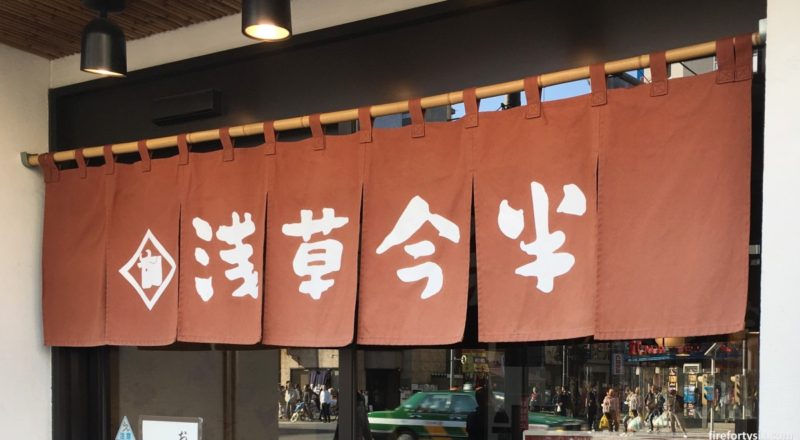The history of Asakusa Imahan (浅草今半) goes back to the turn of the century. Not this century, but the one before that, making it more than a hundred years old. The Kokusai Street main restaurant doesn’t go quite as far back, but it seeks to preserve the century-old legacy of its founders.

Japanese beef is world-renowned and there are various traditional ways of serving high-quality Kobe beef, including teppanyaki, shabu-shabu and my personal favourite, sukiyaki.
You can find many beef sukiyaki in restaurants within Japan and there is a wide-spectrum when it comes to price and quality, from wallet-friendly chain restaurants to fancy high-end specialty ones.
Good quality sukiyaki is not cheap, and while Imahan is by no means the most expensive restaurant, prices start from ¥8,000++ and can go all the way up to ¥25,000++ per person. Ouch!
But as most regular visitors to Japan know, the trick is to go during lunch and order from their relatively less painful lunch menu, where you can get their Sukiyaki Lunch Gozen with 90g of beef at ¥3,800++.

The restaurant opens daily at 11:30am but queues start forming way before that, so be prepared to go early and wait in line with the local obaasans and ojiisans and hungry tourists.
As you enter, you’ll see a wall filled with the numerous awards they’ve won over the years, as well as plaques certifying the provenance of their Kobe beef.


We were lucky enough to be ushered to their third floor dining hall with tatami mats, which made the experience more enjoyable vs the boring table/chair setting on the first floor. The kimono-clad waitresses gently shuffling around the room made the atmosphere authentically local.

The meal starts with small dainty appetisers that change with each season. The waitress then places a small pot of sukiyaki sauce, water to dilute as necessary and a bowl of raw egg each that acts as a natural dipping sauce. She whisks each egg using her long green bamboo chopsticks and hands the bowl over individually.


The beef is then presented on a large plate, together with the accompaniments of vegetables, tofu, negi, shitake mushrooms, shirataki noodles and mochi branded with their logo.
Even though the lunch set is significantly cheaper than its dinner equivalent, the amount of beef provided is only slightly less (90g vs 130g). The slices are cut thinly, but not too thinly that you lose the satisfyingly meaty texture of each bite.


So that you fully experience the quality of the beef, the waitress pours the sauce into the cast iron pot and cooks the first piece for each person, carefully and deliberately.
When it reaches the correct doneness, she places each piece into the raw egg so that the residual heat of the meat slightly cooks it, creating a natural and rich sauce.
As you enjoy the very first piece of meaty, fatty, sweet and salty heaven, she places the vegetables etc on the pot to simmer, with instructions for you to add extra sauce or water to suit your preferred taste.
You’re then served rice, pickles and miso soup and left to your own devices to cook the remaining pieces of beef at your leisure.



Even though I paid close attention to how she cooked that very first piece, I couldn’t quite replicate the exact level of doneness.
But sukiyaki is a forgiving dish, and as long as you don’t nuke the meat to death, it will still taste great, especially when you use top-grade wagyu.
Looking around the dining hall, it was clear that the diners at each table were enjoying their meal. Some appreciating it discretely and quietly, others snapping photos excitedly and oohing-and-aahing between bites.
Asakusa is where you find many traditional Japanese restaurants, and Imahan is as traditional as it gets.
The next time you’re in the neighbourhood visiting the Tokyo Skytree and Sensoji Temple, you might want to consider having lunch at Asakusa Imahan, for the unforgettable taste of hundred year old sukiyaki.

Hi there, I found your web site via Google while searching for a related topic, your website came up, it looks good. I’ve bookmarked it in my google bookmarks.